#Neutron Absorber Material
Explore tagged Tumblr posts
Text
Global Neutron Absorber Material Market Size, Growth Rate, Industry opportunities 2024-2030
Global Info Research’s report offers key insights into the recent developments in the global Neutron Absorber Material market that would help strategic decisions. It also provides a complete analysis of the market size, share, and potential growth prospects. Additionally, an overview of recent major trends, technological advancements, and innovations within the market are also included.Our report further provides readers with comprehensive insights and actionable analysis on the market to help them make informed decisions. Furthermore, the research report includes qualitative and quantitative analysis of the market to facilitate a comprehensive market understanding.This Neutron Absorber Material research report will help market players to gain an edge over their competitors and expand their presence in the market.
According to our (Global Info Research) latest study, the global Neutron Absorber Material market size was valued at USD 100.8 million in 2023 and is forecast to a readjusted size of USD 174.3 million by 2030 with a CAGR of 8.1% during review period. The neutron absorber materials are required to absorb neutrons without forming long-lived radionuclides during the reactor operations. The most commonly used materials are boron– stainless steel alloy, boron-aluminum alloy, and boron carbide-aluminum composites.
The Global Info Research report includes an overview of the development of the Neutron Absorber Material industry chain, the market status of Spent-fuel Storage Racks (Boron–stainless Steel Alloy, Boron-aluminum Alloy), Storage and Transportation Casks (Boron–stainless Steel Alloy, Boron-aluminum Alloy), and key enterprises in developed and developing market, and analysed the cutting-edge technology, patent, hot applications and market trends of Neutron Absorber Material.
Regionally, the report analyzes the Neutron Absorber Material markets in key regions. North America and Europe are experiencing steady growth, driven by government initiatives and increasing consumer awareness. Asia-Pacific, particularly China, leads the global Neutron Absorber Material market, with robust domestic demand, supportive policies, and a strong manufacturing base.
We have conducted an analysis of the following leading players/manufacturers in the Neutron Absorber Material industry: 3M、Holtec International、Nikkeikin Aluminium Core Technology Company、Nippon Yakin Kogyo、MillenniTEK、Lemer Pax、Jiangsu Hailong Nuclear Technology Market segment by Type: Boron–stainless Steel Alloy、Boron-aluminum Alloy、Boron Carbide-aluminum Composites、Others Market segment by Application:Spent-fuel Storage Racks、Storage and Transportation Casks、Others Report analysis: The Neutron Absorber Material report encompasses a diverse array of critical facets, comprising feasibility analysis, financial standing, merger and acquisition insights, detailed company profiles, and much more. It offers a comprehensive repository of data regarding marketing channels, raw material expenses, manufacturing facilities, and an exhaustive industry chain analysis. This treasure trove of information equips stakeholders with profound insights into the feasibility and fiscal sustainability of various facets within the market. Illuminates the strategic maneuvers executed by companies, elucidates their corporate profiles, and unravels the intricate dynamics of the industry value chain. In sum, the Neutron Absorber Material report delivers a comprehensive and holistic understanding of the markets multifaceted dynamics, empowering stakeholders with the knowledge they need to make informed decisions and navigate the market landscape effectively. Conducts a simultaneous analysis of production capacity, market value, product categories, and diverse applications within the Neutron Absorber Material market. It places a spotlight on prime regions while also performing a thorough examination of potential threats and opportunities, coupled with an all-encompassing SWOT analysis. This approach empowers stakeholders with insights into production capabilities, market worth, product diversity, and the markets application prospects. Assesses strengths, weaknesses, opportunities, and threats, offering stakeholders a comprehensive understanding of the Neutron Absorber Material markets landscape and the essential information needed to make well-informed decisions. Market Size Estimation & Method Of Prediction
Estimation of historical data based on secondary and primary data.
Anticipating market recast by assigning weightage to market forces (drivers, restraints, opportunities)
Freezing historical and forecast market size estimations based on evolution, trends, outlook, and strategies
Consideration of geography, region-specific product/service demand for region segments
Consideration of product utilization rates, product demand outlook for segments by application or end-user. About Us: Global Info Research is a company that digs deep into Global industry information to Neutron Absorber Material enterprises with market strategies and in-depth market development analysis reports. We provide market information consulting services in the Global region to Neutron Absorber Material enterprise strategic planning and official information reporting, and focuses on customized research, management consulting, IPO consulting, industry chain research, database and top industry services. At the same time, Global Info Research is also a report publisher, a customer and an interest-based suppliers, and is trusted by more than 30,000 companies around the world. We will always carry out all aspects of our business with excellent expertise and experience.
0 notes
Text
Material absorbente de neutrones, previsión del tamaño del mercado mundial, clasificación y cuota de mercado de las 13 principales empresas
Según el nuevo informe de investigación de mercado “Informe del Mercado Global del Material absorbente de neutrones 2024-2030”, publicado por QYResearch, se prevé que el tamaño del mercado mundial del Material absorbente de neutrones alcance 0.26 mil millones de USD en 2030, con una tasa de crecimiento anual constante del 5.3% durante el período de previsión.
Figure 1. Tamaño del mercado de Material absorbente de neutrones global (US$ Millión), 2019-2030

Según QYResearch, los principales fabricantes mundiales de Material absorbente de neutrones incluyen 3M, Holtec International, Nikkeikin Aluminium Core Technology Company, Rochling, Antai-heyuan Nuclear Energy Technology & Materials, Nippon Yakin Kogyo, MillenniTEK, Ramon Science and Technology, Hangzhou Taofeilun, Lemer Pax, etc. En 2023, las cinco principales entidades mundiales tenían una cuota de aproximadamente 74.0% en términos de ingresos.
Figure 2. Clasificación y cuota de mercado de las 13 principales entidades globales de Material absorbente de neutrones (la clasificación se basa en los ingresos de 2023, actualizados continuamente)

Sobre QYResearch
QYResearch se fundó en California (EE.UU.) en 2007 y es una empresa líder mundial en consultoría e investigación de mercados. Con más de 17 años de experiencia y un equipo de investigación profesional en varias ciudades del mundo, QY Research se centra en la consultoría de gestión, los servicios de bases de datos y seminarios, la consultoría de OPI, la investigación de la cadena industrial y la investigación personalizada para ayudar a nuestros clientes a proporcionar un modelo de ingresos no lineal y hacer que tengan éxito. Gozamos de reconocimiento mundial por nuestra amplia cartera de servicios, nuestra buena ciudadanía corporativa y nuestro firme compromiso con la sostenibilidad. Hasta ahora, hemos colaborado con más de 60.000 clientes en los cinco continentes. Trabajemos estrechamente con usted y construyamos un futuro audaz y mejor.
QYResearch es una empresa de consultoría a gran escala de renombre mundial. La industria cubre varios segmentos de mercado de la cadena de la industria de alta tecnología, que abarca la cadena de la industria de semiconductores (equipos y piezas de semiconductores, materiales semiconductores, circuitos integrados, fundición, embalaje y pruebas, dispositivos discretos, sensores, dispositivos optoelectrónicos), cadena de la industria fotovoltaica (equipos, células, módulos, soportes de materiales auxiliares, inversores, terminales de centrales eléctricas), nueva cadena de la industria del automóvil de energía (baterías y materiales, piezas de automóviles, baterías, motores, control electrónico, semiconductores de automoción, etc.. ), cadena de la industria de la comunicación (equipos de sistemas de comunicación, equipos terminales, componentes electrónicos, front-end de RF, módulos ópticos, 4G/5G/6G, banda ancha, IoT, economía digital, IA), cadena de la industria de materiales avanzados (materiales metálicos, materiales poliméricos, materiales cerámicos, nanomateriales, etc.), cadena de la industria de fabricación de maquinaria (máquinas herramienta CNC, maquinaria de construcción, maquinaria eléctrica, automatización 3C, robots industriales, láser, control industrial, drones), alimentación, bebidas y productos farmacéuticos, equipos médicos, agricultura, etc.
0 notes
Text
The Chemical Structure of Redstone
So I was curious about what the chemical structure of Redstone looks like, and Minecraft Education Edition, albeit unintentionally, gives us a canon look into what Redstone is made of:

In Minecraft Education Edition, putting a Redstone Block into a Material Reducer shows that it's composed of 31 Carbon, 31 Uranium, and 38 Unobtanium, which we can assume to be measured in grams
Dividing the Redstone Block into Redstone Dust, each Redstone Dust is then composed of approximately 3.4 Carbon, 3.4 Uranium, and 4.2 Unobtanium
Again assuming that's measured in grams, that's 0.17 cm³ of Uranium, 1.496 cm³ of Carbon, and ???³ of Unobtanium per Redstone Dust
So what does this tell us about the chemical structure of Redstone? Basing this on Redstone Dust's composition, we can estimate that each Redstone molecule is composed of 3 Carbon atoms, 3 Uranium atoms, 4 Unobtanium atoms, a little under half of the time it binds to an extra Uranium and/or Carbon, and 20% of the time it binds to an extra Unobtanium
This also has some horrifying implications for how Redstone works:
Redstone would be extremely volatile as the radioactive decay from Unobtanium and Uranium would occasionally release Helium ions through alpha radiation, sometimes breaking apart Carbon into two Beryllium atoms (as it absorbs the extra proton and neutron from the Uranium) or merging into Oxygen
So Redstone should, in theory, be extremely flammable and potentially explosive, which implies that cave static, or the player mining Redstone with an Iron Pickaxe, could lead to a spark that causes an explosive cave-in
As Unobtanium is just a placeholder for unobtainable elements (hence the name), I'm going to estimate Unobtanium in this case as Unbinilium, the placeholder name for element 120
Why?
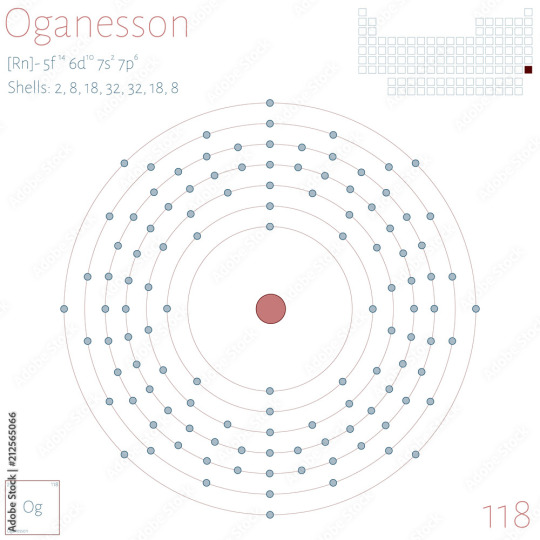
I'm estimating the Unobtanium as Redstone as being larger than the largest man-made element, Oganesson, which holds an impressive 118 protons
Each valence electron shell, from innermost to outermost, can bind with 2, 8, 18, 32, 32, 18, and 8 shells respectively, so I'd like Unobtanium to be an element we haven't discovered yet, and consequently I'd like to jump up to the next shell
While I could estimate with element 119's placeholder, Ununennium, it would have one electron in the next shell, so Unbinilium allows for easier chemical binding
So what does this molecule look like then? Well, horrifyingly...
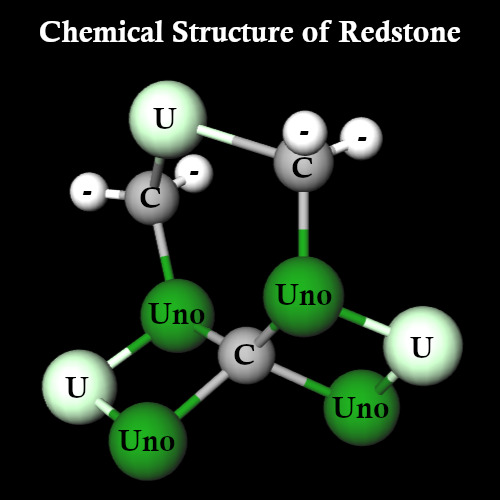
It looks like this. As Redstone forms in crystal lattices, and only two Carbon atoms are free to bind, I can absolutely see why it's so brittle that it breaks into powder.
This makes the structure of Redstone:
C3U3Uno4 (55% of molecules) C4U3Uno4 (13% of molecules) C3U4Uno4 (13% of molecules) C4U4Uno4 (7% of molecules) C3U3Uno5 (5% of molecules) C4U3Uno5 (3% of molecules) C3U4Uno5 (3% of molecules) C4U4Uno5 (1% of molecules)
An extremely radioactive, flammable, and explosive compound.
#redstone#minecraft#chemistry#physics#education#i would love if someone could submit what a 2D representation of these molecules would look like#i don't actually know how to make them
4K notes
·
View notes
Text
Breeding blankets for fusion reactors
So, barring a few ambitious projects involving helium-3, fusion reactor power plants will use hydrogen isotopes as fuel: a 50/50 mixture of deuterium (hydrogen-2) and tritium (hydrogen-3). Deuterium is very stable and relatively abundant, as far as these things go, and can be extracted from ordinary seawater. Tritium, however, has a half life of just over 12 years, so it doesn't occur in nature.
Fortunately, you can use your fusion reactor to synthesize its own tritium fuel, via the transmutation of lithium-6. You use the powerful neutron flux from the fusion plasma to “breed” tritium in lithium, extract it, then feed it back into the reactor. The figure of merit for this process is the tritium breeding ratio (TBR), which is simply the ratio of tritium bred to tritium used. The goal is to get a TBR substantially greater than 1.

This figure shows the physics of tritium breeding, where neutrons from the deuterium-tritium fusion plasma are absorbed by lithium, which then splits into helium and tritium. [source]
Generally speaking, most concepts for tritium breeding involve wrapping a lithium “breeding blanket” around the outside of the reactor, with as few gaps as you can manage. A deuterium-tritium reactor is constantly generating fast neutrons. You want to keep as much of that emission as possible inside the breeding blanket, for both tritium and power generation.
There are a few different ideas for breeding blanket designs, several of which are going to be tested on ITER, the massive reactor being built in France. One concept is a thick sheath of lithium ceramic that surrounds the vessel, either as solid slabs or pebbles. As tritium breeding occurs under the blanket, water or liquid helium is circulated through it, cooling the lithium and potentially extracting heat for electricity generation.
While such a blanket might be relatively “simple” (lol) to build, there are some pretty fundamental challenges. Neutrons will penetrate most materials with ease, and it might be tricky to extract tritium that's been bred deep inside of solid lithium. Ideally, you could do the extraction without pause, even as breeding is ongoing. For some designs, though, you have to cycle out breeder units for harvesting as they get a full load of tritium.
Another concept is “liquid breeding." This concept uses a molten mixture of metallic lithium and lead, or a lithium salt compound like FLiBe (fluorine-lithium-beryllium). The liquid would be pumped through a “breeding zone” around the vessel, where the neutron flux is thickest. The tritium will then be continuously extracted from the breeding fluid as it flows back out. As part of the process, you can run the hot liquid through a heat exchanger, heating water to power a steam turbine.
Liquid breeding does raise some prominent engineering challenges. Hot, molten breeding fluid will be very hard to handle – not just because of the heat, but also because you're trying to pump a massive quantity of viscous fluid into a very tight breeding zone. Moreover, molten lithium-lead might react explosively with air. If your breeding system springs a leak, you’ll have a serious mess on your hands!
It’s still unclear which of these breeding strategies will bear fruit. From conception to implementation, there are still a lot of unknowns! Both liquid and solid breeding will be conducted in France, and a number of private fusion companies have plans to breed tritium in their machines as well.
497 notes
·
View notes
Note
ask for infodump about Chernobyl as someone who has never even heard of it
INHALES
Chernobyl is considered to be the worst nuclear disaster in history, rated at a 7 on the International Nuclear Event Scale (INES), the only other disaster ranking at a 7 being in Fukushima back in 2011. The disaster occurred on April 26, 1986. The Chernobyl Nuclear Power plant was located in Ukraine, which was under the control of the Soviet Union at the time. It was only about 16 miles from the Belarus-Ukraine border, which was also under Soviet control. There were two main towns nearby, Chernobyl itself, which was older, had only about 15,000 residents, and was actually farther from the Chernobyl Nuclear Power Plant than Pripyat, which had about 50,000 residents, and was only about 2 miles from the plant. Pripyat was newer, and residents had an average age of about 26. The town itself was filled with young, well educated people starting new lives. A large number of public buildings were located in Pripyat, including a school and a sports complex, which contains the famous Azure Swimming Pool. The plant supplied Pripyat with energy, and the place was considered a sort of "dream city." The plant was an RBMK-1000 type reactor, a generation I nuclear reactor, which are the earliest, and generally most hazardous, nuclear reactors. RBMKs were used to produce Plutonium, a radioactive material primarily used in nuclear weapons. However, they could also be used to produce civilian energy, so a few were constructed to supply parts of the USSR with power. At the time of the incident, there were four reactors in operation, with reactors 5 and 6 under construction. A test was scheduled to be conducted to see if the backup generators could successfully turn on in time to keep the cooling systems running at safe levels. However, the test was delayed until the less experienced night shift was in. They turned off the reactor's shutdown feature and lowered the power to the reactor. Reactors need energy to function, as they have to be cooled. For these reactors, large amounts of water were used to cool them. Without the shutdown function, the reactor was in danger of overheating if it wasn't cooled. Regardless, they ran the test. When the backup generators took too long to turn on, panic set in, and the reactor began to overheat. Then, somehow hit the AZ-5 button, which lowers all control rods into the reactor at once. Control rods are used to absorb excess amounts of shed neutrons from the nuclear reactions. However, they momentarily increase reactions when first introduced into the reactor chambers. The undertrained staff of the night shift were not aware of this. With the increased reactivity, the reactor was now dangerously hot, and the casinging around the fuel rods began to rupture, causing white-hot radioactive fuel to come into direct contact with steam. At 1:23 A.M., April 26, 1986, Chernobyl Nuclear Reactor #4 exploded. The contact between the fuel and the steam caused a steam explosion, blowing the 1000 tonne reactor roof into the air and spewing radioactive debris and particles into the air.
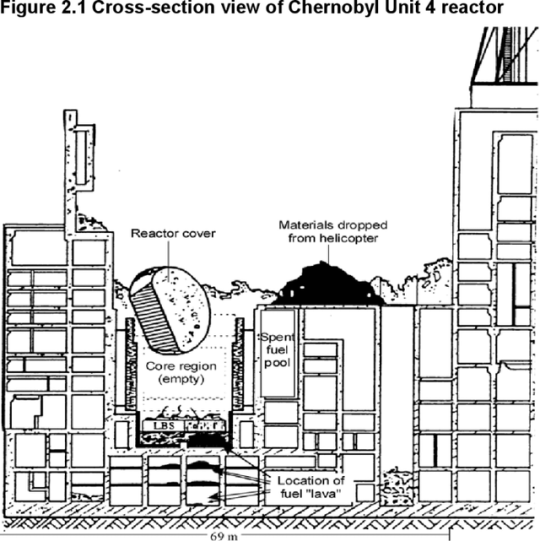

Two plant workers were killed instantly by either the force of the blast or from being hit by debris. Although plant workers realized what had happened rather quickly, superiors were slow to act. Firefighters were called in, but they were not told the dangers of the radiation. Most died within a few months. But that was only the tip of the iceberg. In Pripyat, the Amusement Park that had been scheduled to open the next day was hurriedly opened a day early to distract residents from the fact that the reactor was on fire.

It took 36 hours for Soviet Officials to finally begin to evacuate Pripyat, only after residents had begun to report nausea, dizziness, fatigue, vomiting, and headaches, all symptoms of radiation poisoning. A few weeks earlier, citizens were trained with gas masks in case there ever was an incident. Officials said that they didn’t need them, as they didn’t want to cause a panic.
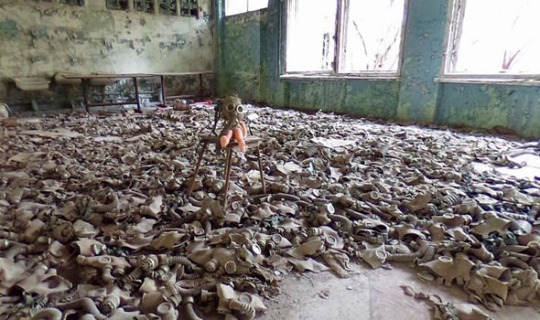
Residents were also told they would be returning soon, and to leave everything behind. They did not come back. This left Pripyat as an eerie ghost down where everything seemed to have simply been dropped and left. Today, it is still abandoned, and is being slowly reclaimed by nature.
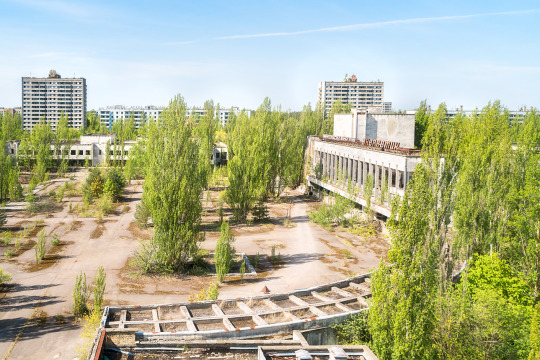
During the cleanup of the incident, “Liquidators” were called in. Some knew the dangers, others didn’t. The fire of the reactor was too hot to be put out by water, so tons and tons or boron, sand, and lead were dumped onto the burning reactor by helicopters that flew over. It didn’t help much, and the reactor finally stopped burning after about 2-3 weeks. A structure dubbed “The sarcophagus” was built over the reactor to contain the radiation, though it was rushed and leaked radiation. A large area of woodlands was contaminated by the radiation, and it turned red and died, earning the nickname “The Red Forest.” Most of these trees were cleared and buried. Highly contaminated houses were knocked down, animals were shot, and crops destroyed. Absolutely everything that was highly contaminated was at least attempted to be destroyed and buried. Still, not everything could be destroyed and buried, there was simply too much. One object, dubbed “The Claw of Death” was, according to conflicting accounts, either used to assist in the overall cleanup or was used specifically in the cleanup of the plant roof. It is radioactive enough to give a lethal dose if sat in for about 11 hours.
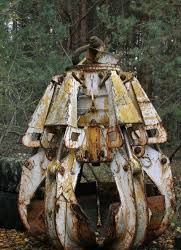
Another rather infamous object is “The Elephant’s Foot” which is a mass of sand, concrete, and melted reactor fuel that had melted its way through the floor and down into the basement. Upon discovery, the sheer amount of radiation it gave off was enough to give you a fatal dose within about 90 seconds. Today, that’s increased to about five minutes. The foot was unyielding to sampling tools, so, they shot it with a Kalashnikov Rifle (AK-47) to get a sample.
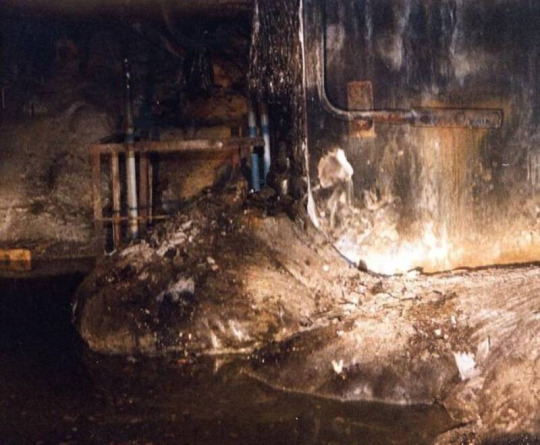
After a very short period of time, the remaining three reactors were up and running again, as the USSR simply needed power desperately. By December of 1987, all three reactors were up and running again. They were operated for years, until the last reactor was finally shut down for good in 2000. Being so close to the border, and with the wind conditions of the time, mass amount of radioactive particles were blown north to Belarus. The Soviet Union had planes fly over and seed the clouds with chemicals, forcing them to rain on rural land instead of heavily populated areas, but this still had a major effect, as about 1/3 of Belarusian farmland was contaminated. However, the winds began to shift, blowing radiation towards Europe. Sweden was the first to sound the alarm, asking if something had happened after detecting dangerous amounts of airborne radiation and determining it was not from any of their own reactors. The USSR finally admitted there had been a “very small” incident at Chernobyl, and was very reluctant to give the world information. Careful monitoring protocols were put on resources everywhere in Europe, from grain to milk to wood, all were carefully measured for radiation. Years later, after the Sarcophagus was determined to be unsafe, the New Safe Confinement unit was constructed, which is a semicircular dome over the existing Sarcophagus. The New Safe Confinement was finished in 2018.
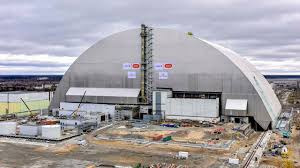
DONE!
(For now)
@not-wizard-council-aristocrat @anarcho-neptunism @siley-the-wizard @villainessbian
569 notes
·
View notes
Text
DOES DARK MATTER REALLY EXIST??
Blog#473
Wednesday, January 22nd, 2025.
Welcome back,
In April 2023, scientists from the Atacama Cosmology Telescope (ACT) collaboration created a map of the universe showing the detailed distribution of dark matter, a mysterious form of matter that makes up around 85% of the total matter in the universe.
While creating any accurate map of matter distribution across the cosmos is an impressive feat, it is particularly extraordinary for dark matter, which does not interact with light and thus cannot be seen directly with telescopes or other instruments.

So, if dark matter is effectively "invisible," how can scientists map it? And how do we even know dark matter exists? Put simply, to detect dark matter, astronomers look at its indirect effects on gravity and how it impacts other objects with mass and light.
All galaxies are believed to be wrapped in an invisible halo of dark matter, and this envelope is vitally important; galaxies are rotating so rapidly, that without dark matter, they would have been torn apart long ago if they were held together only by the influence of their stars, gas, dust and planets, according to the European Organization for Nuclear Research (CERN).

As such, this mysterious substance must have played an important role in the evolution of the universe.
Everything we see around us on a day-to-day basis is made up of "ordinary" matter, known as baryonic matter, meaning it's composed of baryons (such as protons and neutrons). According to the Swinburne Centre for Astrophysics and Supercomputing, cosmic objects made of baryonic matter include clouds of cold gas, planets, comets and asteroids, stars, neutron stars and even black holes.

Most of these cosmic objects (as well as Earthbound objects, such as tables, cars and cats) can be seen because baryons interact with the electromagnetic force, one of the universe's four fundamental forces. When electromagnetic radiation, including visible light, falls on baryonic objects, they absorb photons and reemit them, or simply reflect them, so these objects can be seen. Even dark clouds of cosmic gas that do not shine brightly absorb photons of light at certain wavelengths, so they can be seen by their interaction with light.

Scientists know that dark matter is distinct from ordinary baryonic matter because whatever particles dark matter comprises either don't reflect, absorb or emit electromagnetic radiation or if they do interact with light, they do so incredibly weakly. This means dark matter can't be seen in traditional ways that rely on electromagnetic radiation.
Although dark matter does not interact strongly via electromagnetism, it does interact with another fundamental force: gravity. It is through the interaction with gravity that astronomers were first able to discover dark matter and, later, accurately map it.

The first hints of dark matter were observed in 1933 when California Institute of Technology astronomer Fritz Zwicky used the Mount Wilson Observatory to measure the visible mass of the Coma Cluster of galaxies. Zwicky, later dubbed "the father of dark matter," found that single galaxies in this cluster were moving too fast for the cluster to remain together based on the gravity of the visible matter alone.
Zwicky suggested that an as-yet-unobserved type of mass — "dunkle Materie," or "dark matter" — might explain this disparity, but the concept wouldn't be widely accepted for decades to come, until after his death in 1974.

While studying the rotational dynamics of galaxies, Carnegie Institution astronomer Vera Rubin became the next scientist to infer the presence of dark matter with observations that helped to cement it as an accepted element of the universe. Rubin saw that the stars at the edge of spiral galaxies far from their dense centers were moving as fast as stars closer to the galactic heart, according to the American Museum of Natural History.
Originally published on https://www.space.com
COMING UP!!
(Saturday, January 25th, 2025)
"WHAT ARE DARK STARS??"
#astronomy#outer space#alternate universe#astrophysics#universe#spacecraft#white universe#space#parallel universe#astrophotography
100 notes
·
View notes
Note
Ok so I’m a Boston born and raised nuclear engineer and I feel an INTENSE need to correct the physics in your post— an electron can’t hit a U-238 nucleus (or any nucleus) b/c the Coulomb force keeps the negatively charged particles from the positively charged nucleus. I think you meant a neutron rather than an electron, but there is still an issue— U-238 is considered a fertile isotope, not fissile (I.e. only VERY PARTICULAR neutrons will make it fission, normally it just absorbs neutrons and later decays into plutonium, which IS fissile, but that takes time so this can’t cause a chain reaction fast enough). Anyways, I think you meant “a neutron hitting a U-235 nucleus”, which is the normal fission reaction that powers reactors. But this only releases ~200 MeV of energy so one reaction isn’t enough to annihilate even one Yankees fan :(
Hate this city. Assholes as far as the eye can see. Stick my neck out and some twerp starts lecturing me about fissile materials. Maybe I show him what a fertile isotope looks like once you get a nice dinner at the four seasons, loosen the tension a little bit. Get the plutonium flowing. Fuckin coulomb forces keeping us from the ones we love.
or maybe just the ones we find ourselves irresistibly attracted towards, who knows. I knew an electron who went nuclear once. He and this girl had like, a gravity to ‘em. I saw them in the north end, and the didn’t even react to me. It’s like they led these incredibly charged lives and now they’re just this dense mass together.
Yet I’d never live anywhere else. Ah well. Home is where the hatred is. Gil scott heron said that
110 notes
·
View notes
Text

@legofreak33 Thank you for ordering the Autism Deluxe Special!
Here’s why I think Zane Julien is Nuclear Powered
(Contains spoilers for 2011 ninjago seasons 1-3)
(I also have not finished the show so i might be missing some details)
A singular object that has seemingly infinite energy
Infinite energy is impossible, but there’s something that comes pretty close - radioactive materials. Since they are *literally* emitting energy and can do so for thousands of years, radioactive objects are basically the closest thing to an “object that acts as an infinite energy source” you can get.
Blue Light
It’s blue. It glows.
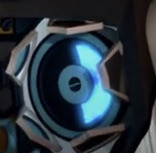
Now I couldn’t find a specific element that glows blue AND could be used in nuclear energy, as the only one I know of is cesium chloride. HOWEVER. I don’t need a specific element in order to prove my point here.
Cherenkov radiation.
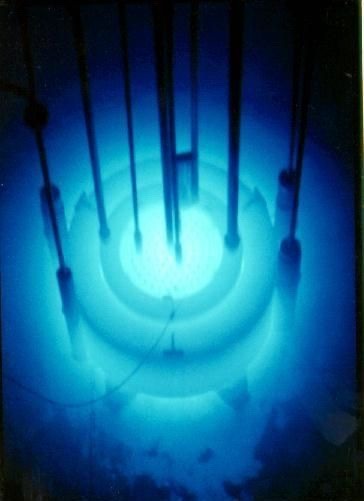
Cherenkov radiation occurs when charged particles (say, an electron) moves faster than light. IRL this is only possible in a medium wherein photons themselves are slowed, such as water, but in the realm of make believe anything is possible. Even if we DO have real world physics in play, it’s totally possible that the energy core just has water inside it along with everything else (the core’s Blue DOES have a bit of movement after all!)
Critical Mass and Going Boom
This is where it gets too easy. They literally say it can reach “critical mass” IN THE SHOW. THEIR WORDS. NOT MINE.
If you aren’t familiar, critical mass is basically a point where there is enough material (a certain *mass*) in one area to cause a chain reaction: An atom releases a radioactive particle, which hits another atom, causing it to release another radioactive particle. Now we have two radioactive particles. They keep hitting other atoms. And so on and so forth. (Strangely, the show seems to reference critical mass as running *out* of energy, which is the literal exact opposite of what it actually is, so i’m opting to ignore that.)
So how does this apply to Zane and the references to a critical mass in the show? I personally like to believe that his “critical mass” was caused by *using too much power at once.* Kinda. There’s probably a control mechanism with neutron absorbers inside the core, so maybe the critical mass was caused by him retracting said absorbers, thus causing a chain reaction. (also as a tangent, titanium is apparently a decent neutron absorber! perhaps the real titanium ninja was the friends we made along the way)
Oh, and by the way. Nuclear objects reaching criticality are known to glow blue.
Pic related.

Difference between this and the core glow would be based on the types of particles, with the former being charged particles in a medium and the latter being neutrons. I think. Idk im a biologist not a nuclear physicist i dont go here i just autism about it
discussion section
So yeah! Dr. Julien just created a tiny nuclear reactor to make his son go. Sure. Fuck it. Who Gives A Shit
Anyway i think that’s all i have!!! This obviously isn’t all encompassing (how did Nya survive holding a piece of the core? Why was the explosion all icy and not like, anything else? How does Zane not kill everybody he meets?) but those can all be explained away in the name of “i have had a special interest in nuclear energy since i was a very small child and nobody can take this away from me.” like maybe people are fine because he just has really good shielding. Or maybe Nya is fine because girls are immune to radiation (totally true fact)
Thanks for reading! Take this piece of uranium ore as thanks for reading this entire post. 🪨
#ninjago#lego ninjago#ninjago zane#zane julien#dr julien#long post#i sound like matpat.#i’m sorry guys the autism won’t stop winning
113 notes
·
View notes
Text


A MILLISECOND ROTATION PERIOD IS A RED FLAG
Recently, a paper I wrote about an accreting neutron star got accepted for publication in a scientific journal, and in the process of working on it, I was forced to think about something: how exactly should I interpret accreting neutron stars in the context of the galaxy of Antiocheka? (the fictional galaxy most of my astronomy cartoons/stories with the living celestial bodies are set in)
Black hole accretion is them eating the material; that is obvious. But when neutron stars accrete, they don't absorb the gas inside their bodies. It strikes and spreads across their surface. So an eating metaphor doesn't really work for them. I've seen some people compare accreting neutron stars to vampires, given they are "undead" stars and are sucking the plasma off of other stars. But since they don't absorb the star's "blood" they're not really like vampires. They're honestly more like the legend of Elizabeth Bathory, who bathed in the blood of her victims in order to look more youthful. Accretion increases the neutron stars' spin rates (which normally slow down due to their magnetic fields) and temperatures (which normally decrease due to cooling). The accretion therefore makes them seem more "youthful" in a way.
I have previously stated that the black holes of Antiocheka need to constantly accrete matter to remain conscious, which puts them in conflict with the stars, who are nuclear fusion powered. I don't imagine the neutron stars have it quite so dire. But Antiochekan star society uses an energy currency, and so as a neutron star loses its magnetic field, temperature, and rotation, they start running out of ways to generate energy and maintain their status in stellar society. In that case, maybe it's not surprising some would turn to more brutal methods of generating energy...stripping material from other stars...
More science & character notes below the break:
-X-ray binaries are binary star systems where a black hole or neutron star is accreting matter from a star. They emit tons of X-rays, hence the name.
-The pulsar Chandra here is specifically a millisecond pulsar. Millisecond pulsars are thought to be formed when a pulsar accretes material from another star, spinning itself up so it has a millisecond-long rotational period. Some pulsars, in the process of accreting material from their companion star en route to millisecond status, end up destroying the companion star with the power of their winds and jets. These are called "black widow" pulsars for obvious reasons. I imagine Chandra was one of these in the distant past out of desperation, though she doesn't remember much of the incident.
-A millisecond rotation period is therefore a "red flag" for star dating because it implies the neutron star might have once been a black widow pulsar.
-I draw Astro (a T-Tauri star) as a five-point star because he is the star equivalent of a child, so he looks like a child's conception of a star. His "headband" is really glowing red plasma he ties into his corona with his magnetic fields.
-Astro has a crush on Chandra (the neutron star/pulsar) but Chandra does not have any affection for him, so she acts weird on purpose to drive him away. The pink letters in her shouting speech bubble represent X-ray speech. I imagine that sounds very intimidating to Astro, because stars normally speak in UV-optical-infrared light.
-The stellar black hole eating the rocket in the first two panels is Schwarzschild. Chandra and him have mutual affection for each other, so Astro is kind of jealous, especially since he still is influenced by the whole "black holes are instinctual automatons" paradigm most Antiochekan stars buy into. He feels as though he is losing Chandra to literally nothing.
#webcomic#astronomy#astrophysics#neutron star#pulsar#black hole#accretion#space#physics#X-ray#star#stellar black hole
13 notes
·
View notes
Text

— on the nine realms ; a general study of asgard .
aka vi's world-building reference .
The following details are what I consider to be canon for the Nine Realms. This is primarily based on what we know from the MCU, some minor spinoffs (the thor video game comes to mind), concept art + screenplays and some inspirations pulled from the marvel comics (no particular runs just in general)
It's what I'll be referencing when Thor speaks of the Nine Realms, specific planets within them, and Asgard.
THE NINE REALMS (general.)
The following are all the known realms under Asgardian Protection (pulled from the MCU.) Technically there are 10 realms but only 9 if you don't count Asgard.
Asgard || A flat planet also known as 'the realm eternal' . Home of the Asgardians . Asgard resides in its own pocket dimension in deep space and can only be accessed by wormholes. The center of Yggdrasil .
Vanaheim || Sister planet to Asgard . Where the Vanir (sister species) live . Also where skraelings, some breeds of trolls, and mire giants live . (hc : frigga's homeland.) Where hogun is from.
Alfheim || Home of the Light Elves . Highly magically inclined . To the north live the Falligrians and Falligar the Behemoth .
Svartalflheim/Harudheen || Home of the Dark Elves . Once prosperous, Svartalfheim and its surrounding planets have been completely corrupted by Dark Matter . The Dark Elves (and all other life) are now extinct, with a barren land destroyed by war and the Aether (reality stone) .
Muspelheim || Realm of fire. Where Surtur lives. Various Infernir live here . (Infernir also known as Fire Demons and Fire Giants.) Home to The Infernal Forge and a material called "Scabrite" . Scabrite makes up all Muspelheim's armor and weapons . It can absorb incredible amounts of heat .
Niflheim || A realm of the mists and cold . Helheim exists within the depths of Niflheim . Notoriously, Niflheim's legends say that the spirits of the dishonorable dead and the damned travel the dense fogs there . Hela was banished to Helheim, sealed in the Cave of Ages .
Jotunheim || Realm of the Frost Giants and eternal ice and snow . Led by King Laufey . A portion of Jotunheim was destroyed by Loki during the events of "Thor" (2011) .
Nidavellir || A small planet built around a neutron star . Where King Eitri and the dwarves live. The birthplace of urdu metal and its enchanted objects and weapons, including the Infinity Gauntlet, Gungnir, Mjolnir and Stormbreaker .
Midgard || A realm surrounded by its own solar system with 8 other planets. The main inhabitants of Midgard reside on Earth . Home of the Avengers and Jane Foster. A known host of a wellspring of the 'water of sights' that is connected to the Nornns.
Nornheim/Urðarbrunnr || Presumably: a realm connected to the nornns/water of sights, that is inhabited by other beings beyond the nornns , such as rock trolls. (it's implied the nornns themselves are kept to the waters and are semi-supernatural beings.) Filled with forests , swamps , and large mountains .
ASGARD (overview.)
A flat planet with a top side and a bottom side. Topside features various biomes including but not limited to: forests, mountains and cliffs, deep mines and cave systems, jungles, beaches, and small deserts. The bottom plane of Asgard is host to large crystal structures. (hc: mined and utilized as energy sources and magic storage for spells, weapons, and various other mechanisms throughout Asgard.)
Has day and night cycles, an atmosphere, and various weather patterns. Yearly consists of two (and a half) seasons. Its primary two are summer and spring. (Summer has warm days and evenings/nights that result in easily-melting flingsnö , or a light and powdery falling snow.) Spring (Asgard's longest season), is most hallmarked by its near-perpetual twilight hours. Asgard also exhibits some signs of the beginning of fall, which presumably a farmer's season of rest, but Asgard itself does not experience cold snaps or winters.
Asgard boasts a vast series of waterfalls, rivers, and fjords, though all ultimately lead to, and end in, the Sea of Space. The central city is built around and above these waterways.
The Bifrost spans from the Palace of Valskjalf to Himinbjorg, the Bifrost's observatory. This bridge spans the broad length of the Sea of Space, and reveals the cosmos of space the farther out towards the observatory one travels.
Asgard has 1 sun (that orbits around Asgard perpendicularly), 2 (stationary) moons that can be seen during the day.
Asgard's main colors are red and gold. Its main symbol is the celtic triquetra (sometimes also referred to as the trinity knot.)
Asgard uses all forms of viking art styles, but its main three consist of: Jellinge Style, Mammen Style, and especially Urnes Style .
ASGARD (places.)
Locations in Asgard (based on the 1960s comics - present comics. Not comic or mcu accurate obvsly but i'm taking liberties and referencing what I can within reason.)
Valaskjalf - (hc'd) name of the city of Asgard. It houses the Royal Palace of Valaskjalf where Thor + co live. The palace gardens are run by the Queen of Asgard (currently: Frigga) and are called Fólkvangr. Within the great city of Valaskjalf is the Hall of Science, within which is a great ash tree representing Yggdrasil, and acting as an observatory of the Nine Realms.
Himinbjorg - Heimdall's observatory, which can only work upon use of Hofund, an uru-made sword wielded by Heimdall.
The Sea of Space - the name of the sea that stretches from the Asgardian fjords and out into the void of space (also synonymous with "the void of Yggdrasil".)
Gundershelm - the mining region of Asgard. From here can be found the descent into the crystal caves beneath Asgard, known as the Glade of Crystals. A series of waterfalls and great fjord surrounds this place. The crystals begin to form even outside of the mouth of the mining caves descending down. Hence the name 'glade' of crystals, as the fjord looks something like an open patch in a field of snow from above and afar. Therein also lies the Amethyst Cavern and Boulder Road (which is said to span all the way past Varinheim into Skornheim. The trek can be dangerous due to how long it is, and its intense heat.) One of the more popular mines, the "Mines of Andvari" also is here in Gundershelm.
Varinheim - the mountainous area of Asgard, where the asgardian wolves dwell, amongst other hazardous beasts. Varinheim is where the Trials of Virtue (an Asgardian 'coming of age' trial) is held. It is often filled with mists from the snowy peaks far overhead, and the more uncommonly traveled lands are referred to by commoners as the 'land of the lost'. Hreidmar's Hol is deep within the land of the lost, which is a mysterious valley Asgardians dare not pass into for long. Here there is a strange old man called Hardol who is an ancient healer.
Ringsfjord - a merchant town nestled in one of Valakjalf's fjords. It's a place where the finest smithies and weapons makers make their shops, as well as magical enchanters. Legends have it that four enchanter brothers named Brona, Enrakt, Forsung and Magnir lived in Ringsjford, and that Brona was one of the first Asgardians to discover the rifts between realms. (One of which was named 'Brona's Barrier'.) But Brona's discoveries had long since been lost to time, especially after the creation of the Bifrost (until Loki, an equally adept sorcerer, was able to rediscover the passageways between realms for himself). Their forge is called "Forge of the Sons of Ivaldi" and boasts some of the finest asgardian-made weapons in the city.
Skornheim - another old and magic-rife land that's filled to the brim with danger. Including but not limited to; dense swamp-woods, quicksand, spiny plants (called 'nightmare plants'). The most important point of interest here is Skornheim's Stronghold which is a surviving ruin from the first battles against Surtur.
Gymirsgard - west of Skornheim. To reach Gymirsgard, one would have to traverse through the dense forest/swamps and brave the threat of unusually large water-dragons the likes of the fabled Jormangundir.
#( headcanon . ) — glory to the man who toils for his land . may it ever prosper .#( asgard world-building . ) — to bridge and river . forest and waterfall . orchard . sea and sky .#personals do not reblog.#(😘 love u guys tho)#saved hcs
7 notes
·
View notes
Text
reading up about neutron bombs and i'm thoroughly impressed at how completely bat shit evil this stuff was.
what the fuck was NATO thinking incorporating this as the basis of their strategy in "defending" west germany?
A neutron bomb, officially defined as a type of enhanced radiation weapon (ERW), is a low-yield thermonuclear weapon designed to maximize lethal neutron radiation in the immediate vicinity of the blast while minimizing the physical power of the blast itself...
By designing the thermonuclear stage of the weapon carefully, the neutron burst can be maximized while minimizing the blast itself. This makes the lethal radius of the neutron burst greater than that of the explosion itself. Since the neutrons are absorbed or decay rapidly, such a burst over an enemy column would kill the crews but leave the area able to be quickly reoccupied. Compared to a pure fission bomb with an identical explosive yield, a neutron bomb would emit about ten times the amount of neutron radiation. In a fission bomb, at sea level, the total radiation pulse energy which is composed of both gamma rays and neutrons is approximately 5% of the entire energy released; in neutron bombs, it would be closer to 40%, with the percentage increase coming from the higher production of neutrons...
Considerable controversy arose in the US and Western Europe following a June 1977 Washington Post exposé describing US government plans to equip US Armed Forces with neutron bombs. The article focused on the fact that it was the first weapon specifically intended to kill humans with radiation. Lawrence Livermore National Laboratory director Harold Brown and Soviet General Secretary Leonid Brezhnev both described neutron bombs as a "capitalist bomb", because it was designed to destroy people while preserving property.
Upon detonation, a near-ground airburst of a 1-kiloton neutron bomb would produce a large blast wave and a powerful pulse of both thermal radiation and ionizing radiation in the form of fast (14.1 MeV) neutrons. The thermal pulse would cause third degree burns to unprotected skin out to approximately 500 meters. The blast would create pressures of at least 4.6 psi (32 kPa) out to a radius of 600 meters, which would severely damage all non-reinforced concrete structures. At the conventional effective combat range against modern main battle tanks and armored personnel carriers (< 690–900 m), the blast from a 1 kt neutron bomb would destroy or damage to the point of nonusability almost all un-reinforced civilian buildings...
Using neutron bombs to stop an enemy armored attack by rapidly incapacitating crews with a dose of 80+ Gy of radiation would require exploding large numbers of them to blanket the enemy forces, destroying all normal civilian buildings within c. 600 meters of the immediate area. Neutron activation from the explosions could make many building materials in the city radioactive, such as galvanized steel (see area denial use below)...
The pulse of neutron radiation would cause immediate and permanent incapacitation to unprotected outdoor humans in the open out to 900 meters, with death occurring in one or two days. The median lethal dose (LD50) of 6 Gray would extend to between 1350 and 1400 meters for those unprotected and outdoors, where approximately half of those exposed would die of radiation sickness after several weeks....
I wonder who was behind the development of these?
The concept was originally developed by the United States in the late 1950s and early 1960s. It was seen as a "cleaner" bomb for use against massed Soviet armored divisions. As these would be used over allied nations, notably West Germany, the reduced blast damage was seen as an important advantage...
The weapon was once again proposed for tactical use by the United States in the 1970s and 1980s, and production of the W70 began for the MGM-52 Lance in 1981. This time, it led to protests as the growing anti-nuclear movement gained strength through this period. Opposition was so intense that European leaders refused to accept it on their territory. US President Ronald Reagan ordered the production of the W70-3, which remained in the US stockpile until they were retired in 1992. The last W70 was dismantled in February 1996...
President Carter delayed development of the neutron bomb in 1978, but during Ronald Reagan's presidency, Cohen claims to have convinced Reagan to make 700 neutron bombs, 350 shells to go into the 8 inch (200-millimeter) howitzer and 350 W70 Mod. 3 warheads for the Lance missile...
In much the same fashion as the area denial effect resulting from fission product (the substances that make up most fallout) contamination in an area following a conventional surface-burst nuclear explosion, as considered in the Korean War by Douglas MacArthur, it would thus be a form of radiological warfare—with the difference that neutron bombs produce half, or less, of the quantity of fission products relative to the same-yield pure fission bomb.
In November 2012, British Labour peer Lord Gilbert suggested that multiple enhanced radiation reduced blast (ERRB) warheads could be detonated in the mountain region of the Afghanistan-Pakistan border to prevent infiltration. He proposed to warn the inhabitants to evacuate, then irradiate the area, making it unusable and impassable. Used in this manner, the neutron bomb(s), regardless of burst height, would release neutron activated casing materials used in the bomb, and depending on burst height, create radioactive soil activation products.
In much the same fashion as the area denial effect resulting from fission product fallout contamination in an area following a conventional surface-burst nuclear explosion, as considered in the Korean War by Douglas MacArthur, it would thus be a form of radiological warfare—with the difference that neutron bombs produce half, or less, of the quantity of fission products relative to the same-yield pure fission bomb. Radiological warfare with neutron bombs that rely on fission primaries would thus still produce fission fallout.
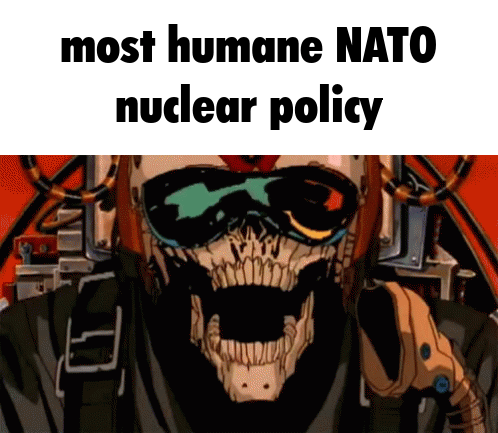
Meanwhile, the strategic doctrine of the Warsaw Pact:
Rather than making extensive preparations for battlefield nuclear combat in Central Europe, the Soviet military leadership believed that conventional superiority provided the Warsaw Pact with the means to approximate the effects of nuclear weapons and achieve victory in Europe without resort to those weapons.
No wonder Wessies were so up in arms and were protesting about America deploying even more nuclear weapons on their soil. They were never considered to be anything more than a speedbump against the USSR.
18 notes
·
View notes
Text
Radiocarbon
A recent article touched on how radiocarbon dating works in relation to the impacts of cosmic rays and the secondary particles they create on Earth. Now, let’s focus on radiocarbon dating itself.
Types of Dating
Radiocarbon dating is an invaluable tool to the fields of archaeology and history. Within the process of dating artifacts, there is absolute dating and relative dating. Relative dating establishes if something is older or younger than another artifact, usually within the same excavation. For example, excavations can expose the stratigraphy of the ground: layers of rock and sediment deposit that build up over time and can be visually distinct, though sometimes bleed into each other. Artifacts found in a lower layer can be theorized to be older than artifacts in layers above it.
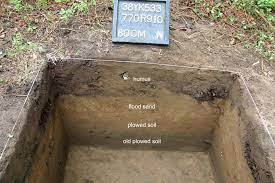
Absolute dating provides more specific dates for the origin of artifacts, and often relies on chemical processes. Radiocarbon dating is one such method.
Radioactive Isotopes
Radiocarbon dating works on the fact that isotopes of carbon exist in nature, and it is their nature to decay over time.
Isotopes are variations of the same chemical element. They have the same atomic number -and therefore number of protons- as the base element, but different amounts of neutrons in the atom’s nucleus. So all carbon isotopes have six protons, but instead of six neutrons like C-12, they can have seven or eight neutrons, which are known as C-13 and C-14, respectively.
Though an isotope, C-13 is stable, meaning it does not decay into another form or element over time. It has enough binding energy to keep the protons and neutrons in its nucleus together.
C-14 is not stable. Over time, C-14 decays into stable Nitrogen through one of the neutrons becoming a proton. In this process it also loses an electron, which are negative particles that ‘orbit’ the nucleus.
C-14 Dating
From secondary particles produced by cosmic rays, C-14 or 14C becomes 14CO, then 14CO2 (carbon-14 dioxide), entering Earth’s carbon cycle. In this way, C-14 absorbs into living tissues through photosynthesis and the food chain. When the living tissue dies, no more C-14 is introduced, starting the time of radioactive decay.
C-14 has a half-life of 5,700± 30 years, meaning that after that many years, the amount of C-14 in the subject has decreased by half. The amount of C-14 present in a material can be measured in three ways: gas proportional counting, liquid scintillation counting, and accelerator mass spectrometry.
In gas proportional counting, the sample of organic material is converted to carbon dioxide gas before being put into cylinders where beta particles are measured. Beta particles are produced by radiocarbon decay, so the dating measures how much more C-14 is left to decay at the time of evaluation.
Similarly, liquid scintillation measures beta particles by the scintillator producing a flash of light when interacting with a beta particle. In this process, the organic material is in liquid form and put between two photomultipliers, devices that convert photons into electrical signals to register when the scintillator indicates a beta particle.
Accelerator mass spectrometry does not measure beta particles. It measures the proportion of C-14 to C-13 and C-12 present in the sample.
The results of these methods are compared to an international standard reference, which has changed throughout the years. For some time, sugar beets harvested in the 1950s were used as comparison for the amount of C-14 present, as well as wood from 1890 and beet molasses from 1977. These varieties of organic material have helped provide reference for the measurements of C-14 isotopes.
Radiocarbon dating has been a useful source of knowledge when examining artifacts. The science behind it is expansive and requires piecing together many different properties of the universe, such as how C-14 enters the atmosphere from cosmic rays, and how it naturally changes form over time as a radioactive isotope. Understanding these different elements can help demystify the processes of scientific discovery, and help us better understand specific case studies in the future.
Additional Resources
1. https://www.nature.com/articles/s43586-021-00058-7#
2. gml.noaa.gov/ccgg/isotopes/chemistry.html
3. https://news.uchicago.edu/explainer/what-is-carbon-14-dating4. https://www.radiocarbon.com/about-carbon-dating.htm#
#radiocarbon#radiocarbon dating#radioactive decay#science#archaeology#anthropology#article#research#resources#environment#human history#stratigraphy#relative dating#absolute dating#We'll look at some case studies maybe next week#more to come#spectrometry#photomultipliers#scientific discovery
4 notes
·
View notes
Text
Material absorbente de neutrones, previsión del tamaño del mercado mundial, clasificación y cuota de mercado de las 13 principales empresas
Según el nuevo informe de investigación de mercado “Informe del Mercado Global del Material absorbente de neutrones 2024-2030”, publicado por QYResearch, se prevé que el tamaño del mercado mundial del Material absorbente de neutrones alcance 0.26 mil millones de USD en 2030, con una tasa de crecimiento anual constante del 5.3% durante el período de previsión.
Figure 1. Tamaño del mercado de Material absorbente de neutrones global (US$ Millión), 2019-2030

Según QYResearch, los principales fabricantes mundiales de Material absorbente de neutrones incluyen 3M, Holtec International, Nikkeikin Aluminium Core Technology Company, Rochling, Antai-heyuan Nuclear Energy Technology & Materials, Nippon Yakin Kogyo, MillenniTEK, Ramon Science and Technology, Hangzhou Taofeilun, Lemer Pax, etc. En 2023, las cinco principales entidades mundiales tenían una cuota de aproximadamente 74.0% en términos de ingresos.
Figure 2. Clasificación y cuota de mercado de las 13 principales entidades globales de Material absorbente de neutrones (la clasificación se basa en los ingresos de 2023, actualizados continuamente)

Sobre QYResearch
QYResearch se fundó en California (EE.UU.) en 2007 y es una empresa líder mundial en consultoría e investigación de mercados. Con más de 17 años de experiencia y un equipo de investigación profesional en varias ciudades del mundo, QY Research se centra en la consultoría de gestión, los servicios de bases de datos y seminarios, la consultoría de OPI, la investigación de la cadena industrial y la investigación personalizada para ayudar a nuestros clientes a proporcionar un modelo de ingresos no lineal y hacer que tengan éxito. Gozamos de reconocimiento mundial por nuestra amplia cartera de servicios, nuestra buena ciudadanía corporativa y nuestro firme compromiso con la sostenibilidad. Hasta ahora, hemos colaborado con más de 60.000 clientes en los cinco continentes. Trabajemos estrechamente con usted y construyamos un futuro audaz y mejor.
QYResearch es una empresa de consultoría a gran escala de renombre mundial. La industria cubre varios segmentos de mercado de la cadena de la industria de alta tecnología, que abarca la cadena de la industria de semiconductores (equipos y piezas de semiconductores, materiales semiconductores, circuitos integrados, fundición, embalaje y pruebas, dispositivos discretos, sensores, dispositivos optoelectrónicos), cadena de la industria fotovoltaica (equipos, células, módulos, soportes de materiales auxiliares, inversores, terminales de centrales eléctricas), nueva cadena de la industria del automóvil de energía (baterías y materiales, piezas de automóviles, baterías, motores, control electrónico, semiconductores de automoción, etc.. ), cadena de la industria de la comunicación (equipos de sistemas de comunicación, equipos terminales, componentes electrónicos, front-end de RF, módulos ópticos, 4G/5G/6G, banda ancha, IoT, economía digital, IA), cadena de la industria de materiales avanzados (materiales metálicos, materiales poliméricos, materiales cerámicos, nanomateriales, etc.), cadena de la industria de fabricación de maquinaria (máquinas herramienta CNC, maquinaria de construcción, maquinaria eléctrica, automatización 3C, robots industriales, láser, control industrial, drones), alimentación, bebidas y productos farmacéuticos, equipos médicos, agricultura, etc.
0 notes
Text
Scientists have made significant advancements in solid-state cooling technology
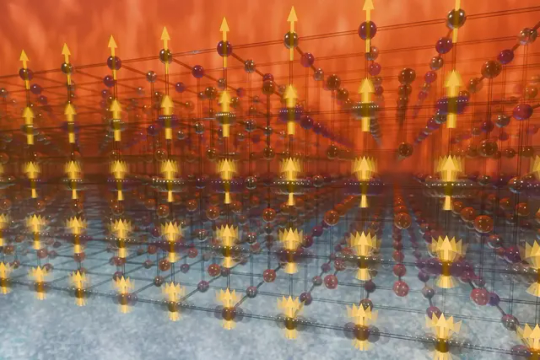
- By Nuadox Crew -
Researchers have significantly advanced understanding of atomic-scale heat motion in materials, crucial for developing solid-state cooling technology.
This environmentally friendly technology operates without traditional refrigerants or moving parts and uses materials like nickel-cobalt-manganese-indium magnetic shape-memory alloys to exploit the magnetocaloric effect for efficient cooling.
A team led by the Department of Energy’s Oak Ridge National Laboratory recently bridged a crucial knowledge gap in atomic-scale heat motion, promising enhancements for solid-state cooling. Using neutron-scattering instruments, they examined a material considered optimal for this technology.
The material undergoes a phase transition when subjected to a magnetic field, absorbing and releasing heat through the magnetocaloric effect. This behavior is enhanced near disordered states known as ferroic glassy states, which improve the material’s heat storage and release capabilities.
Researchers discovered that localized hybrid magnon-phonon modes in the material significantly impact its thermal properties. Neutron scattering revealed that these modes triple the cooling capacity by storing heat in small, disordered regions.
Header image: Strong coupling between localized atomic vibrations and spin fluctuations enhances the absorption and release of heat in a magnetic shape-memory alloy, increasing its capacity for solid-state cooling. Credit: Phoenix Pleasant/ORNL, U.S. Dept. of Energy.
Read more at Oak Ridge National Laboratory/SciTechDaily
Scientific paper: “Hybrid magnon-phonon localization enhances function near ferroic glassy states” by Michael E. Manley, Paul J. Stonaha, Nickolaus M. Bruno, Ibrahim Karaman, Raymundo Arroyave, Songxue Chi, Douglas L. Abernathy, Matthew B. Stone, Yuri I. Chumlyakov and Jeffrey W. Lynn, 14 June 2024, Science Advances.
DOI: 10.1126/sciadv.adn2840
--
Other recent news
Astronomy: Researchers have discovered strange spike-like structures extending from a protostellar disk, providing new insights into star formation.
Innovation: US scientists have created a recyclable polymer that glows in the dark, showcasing a new direction in sustainable materials.
2 notes
·
View notes
Note
Oh cool whats NAA? Also I've heard of using neutrons to treat nuclear waste, but I was never able to find any recent papers on it? Or maybe I wasn't using the correct search terms.
NAA stands for Neutron Activation Analysis. There’s a few varieties, but in our lab we typically do Delayed Gamma Neutron Activation Analysis or DGNAA. We bombard samples with a strong flux of thermal neutrons from the reactor, and the neutrons are absorbed by all manner of atoms in the material. In doing so, the stable nuclei are transmuted into short-lived radioisotopes that then decay via beta emission and emit gamma photons with characteristic energies. By using a scintillator and photomultiplier with an MCA (or the HPGe setup if it’s available (it never is) and we have the nitrogen (we never do)), we can then build a gamma ray spectrum that tells us exactly which trace elements are in the sample and, through cross-section analysis, we can get good measures of exactly how much of each element is present.
It’s an incredibly powerful tool for detecting and characterizing trace elements, with sensitivity several thousand times beyond purely chemical methods. One of the recent experiments we did analysis for involved mapping ancient trade routes in Central America by using pottery shards to identify the characteristic minerals of specific clay deposits and correlating them with how far they had traveled from their origin point. The amount of information that can be found from the atomic fingerprint of an object is astounding.
My pet project (the “refried beans” theory of nuclear waste as some of my buddies call it) is typically referred to as waste transmutation. High-level nuclear waste is produced from the processing of spent fuel, which is laden with highly radioactive fission products that pose a serious danger to anyone who may carelessly handle it in the present or future. While many of these fission products are short-lived and decay almost completely while the fuel waits in the cooling pool of its reactor, some isotopes (especially Caesium-137 and Strontium-90) have half-lives in the range of decades and product abundance above 5%. These nuclides are in the sour spot of maximum danger, with half-lives short enough to be ferociously radioactive even in tiny quantities and long enough that one can’t simply wait for them to decay significantly in a human lifetime.
My project, which is currently a bunch of spreadsheets and slideshows I use to try to convince someone to let me mess around with some highly corrosive extremely radioactive nitric acid salts, involves intercepting the fission product waste after reprocessing separates out the industrially useful heavy radioactinides and placing that waste back into the neutron flux of a reactor or accelerator. In doing so, preliminary simulations show that significant portions of the long-term waste activity can be reduced as the hardy and problematic long-lived isotopes are transmuted into short-lived ephemeral products that decay into stable nuclei in a matter of days rather than centuries.
This process isn’t without its drawbacks and hazards. Waste to be transmuted must be carefully chemically treated to remove elements like Calcium or Chlorine which can absorb neutrons from the beam and become new nuclear waste. Another issue is that the transmutation process makes the waste drastically more radioactive for a brief period of time. No fission product exists can be transmuted directly into a stable isotope, we can only pre-empt their decay. In time, the refried waste and the untreated waste will release the exact same quantity of radiation, and forcing it to undergo centuries’ worth of decay in a matter of weeks will make it extremely hot both physically and metaphorically.
It’s a work in progress.
8 notes
·
View notes
Text
happy pride month 2024!
I will be continuing my yassification project this year. Apparently, I did some additional elements last year that I failed to post, so here is a brief summary of each of them.

Rubidium/Rosboy: A man who is feminine, usually in presentation. A less screwy term for femboy. Rubidium is used in vacuum tubes to bind and remove trace gases.
Strontium/Spectrasexual: The attraction to a specific spectrum of genders, as opposed to multiple select genders. Strontium is the material that times the most accurate atomic clock in the world.
Yttrium/Lavender Marriage: A marriage of convenience to disguise the homosexuality of one or both of the spouses (ultimate MLM/WLW solidarity). Yttrium was the first of the rare earth elements to be discovered, in 1787.
Zirconium/Queer: An umbrella term for the LGBTQ+ community, or a term for someone with a difficult-to-explain identity or who does not wish to classify further. Zirconium is used mainly to surround uranium in the fuel rods of nuclear reactors, due to its high resistance to corrosion and unwillingness to absorb neutrons.
#official periodic table#lgbtq#pride 2024#rubidium#rosboy#strontium#spectrasexual#yttrium#lavender marriage#zirconium#queer
6 notes
·
View notes